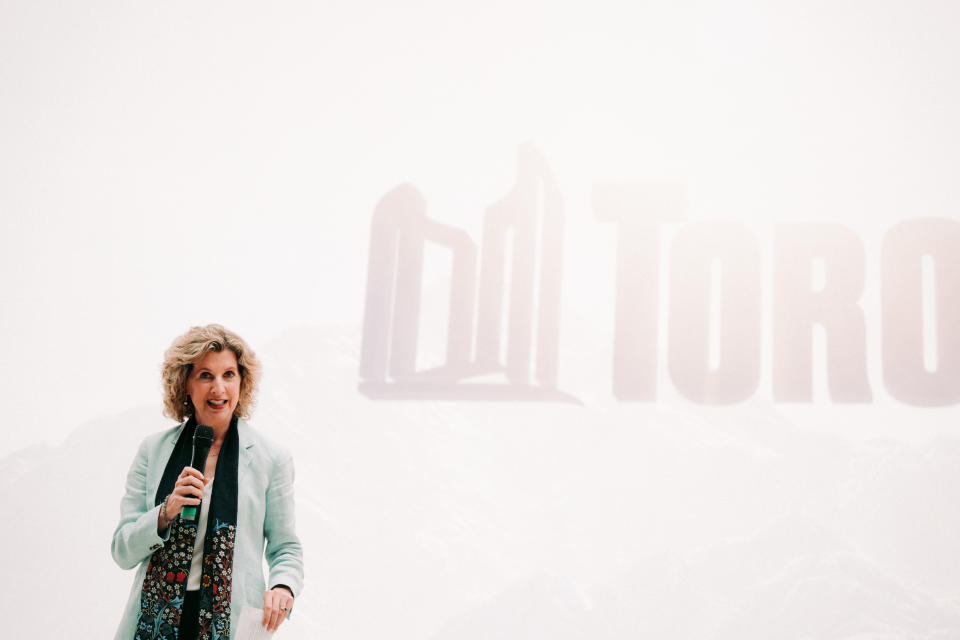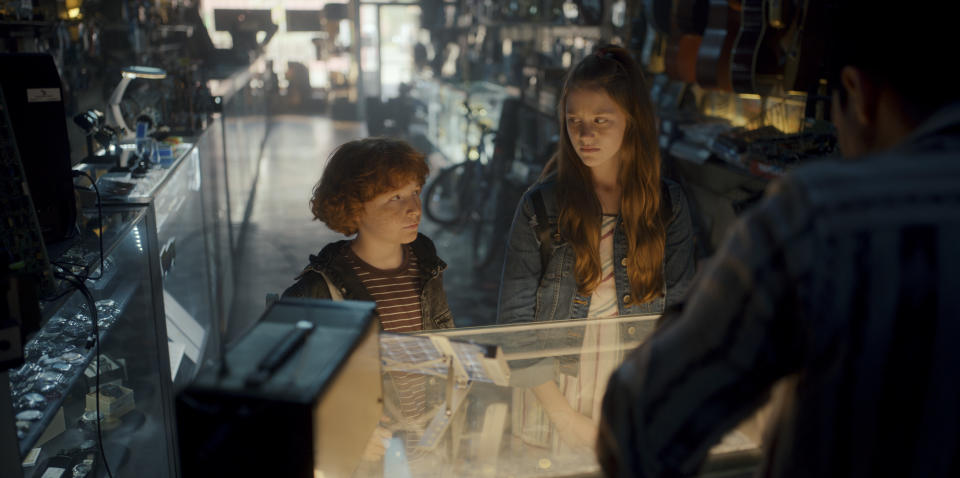Hot Spots: Toronto’s Screen Industries Are Booming & Here’s How The Region Is Looking To Keep Up With The Volume

Toronto has long been a popular destination for major productions thanks to its solid and skilled crew base, competitive tax credits, extensive studio space and growing tech sector. Projects such as Guillermo del Toro’s Frankenstein, Amazon’s hit show The Boys and Netflix comedy Ginny & Georgia are just some of the 24 productions that are shooting (or close to shooting) in Ontario’s capital city. And while its modern infrastructure and very stable and long-established system of local and federal incentives have always been a big draw to the region, this is, say locals, just one piece of the puzzle as the city looks to build on this growth.
“The economic argument is that the production services tax credit is here, and it’s been stable for a really long time,” says Marguerite Pigott, the Film Commissioner and Director of Entertainment Industries for the City of Toronto. “This, plus the currency difference between the Canadian dollar and the U.S. dollar and British pound means it’s now very, very persuasive to shoot in Toronto from an economic perspective. But that doesn’t really tell a fraction of the story.”
More from Deadline
Indeed, stable tax credits and wrap-around funds make production investment in the Ontario province globally competitive. Service and domestic productions can access the Ontario Production Services Tax Credit (OPSTC), a 21.5% refundable tax credit and its federal Canadian Film or Video Production Services Tax Credit (PSTC), a 16% refundable tax credit. Domestic productions and co-productions can access its Ontario Film and Television Tax Credit (OFTTC), a 35% refundable tax credit and its federal Canadian Film or Video Production Tax Credit (CPTC) a 25% refundable tax credit. There’s also the Ontario Computer Animation and Special Effects Tax Credit, which sits at 18%.
“I know producers don’t just look at the economic piece – they look at the value proposition of the jurisdiction as a whole,” says Pigott. “Right now, in Toronto we have about 2.5 million square feet of studio space – that goes from the absolute grade A best-of-the-best studio space, right through to virtual production spaces and all kinds of spaces with different typologies. And because Toronto is such a popular production jurisdiction, we’re building more.”
Indeed, L.A.-based Hackman Capital Partners is working with the City of Toronto and building a film, television and digital media studio complex dubbed Basin Media Studios, located on Toronto’s Port Lands, a redevelopment zone focused on growing Toronto’s $2 billion screen-based industries. Pinewood Toronto Studios recently completed a 170,000 square foot expansion, including five purpose-built soundstages with its Mega Stage dubbed one of the largest soundstages in North America. Downsview Studios, which has eight soundstages, has also just opened up in the city.
“It’s a big footprint and it’s growing because of international investment and because Toronto is so popular,” says Pigott.

Ontario Film Commissioner Justin Cutler of Ontario Creates says that offering a “turn-key solution” to producers has been crucial to luring in productions from across the world around the last decade. “It’s based on a combination of having sustainable and competitive tax credits, a world-class workforce, extensive infrastructure – from soundstages to post and VFX and also forward-thinking programs like our Ontario Green Screen program that helps productions go green and embrace sustainability.”
He adds: “We also offer superb customer service via government agencies, whether it be at a provincial level, a municipal level but also from our production service companies. And we’re a safe and diverse and exciting place to live and work – I think that a lot of foreign producers really appreciate that ecosystem.”
Canada itself has co-production treaties with more than 50 nations, for film and television, excluding the U.S. – something that has always drawn other nations to the territory. Ontario as a province can accommodate 400 productions per year and has, at any given time, hosted 50 concurrent projects. Toronto has been the home to productions such as Star Trek Discovery, See, Locke & Key, Schitt’s Creek, What We Do in the Shadows, The Queen’s Gambit, Jack Reacher, Nightmare Alley and Women Talking and 40% of its production volume and spending, says Cutler, is on homegrown IP. “So, we’ve got this very vibrant, homegrown industry that’s producing its own content but also supports foreign service productions.”
Anthony Leo of Aircraft Pictures, the company behind Netflix’s Geek Girl and Apple TV+ live action series Circuit Breakers, says the experience of the crews and actors in Toronto has long been a driver of the region’s ongoing production boom. “We’ve worked on projects that are quite low budget to primetime TV for big streamers like Apple TV+ and Netflix and no matter what level of budget you want to achieve or that you have available, you’re going to find an amazing crew and performers – no matter what the level is,” he says. “Plus, there are such a dense population of producers that do original IP as well as the service production element. We’ve had the benefit of years of big-budget U.S. productions coming through here and training our teams and our crews at the highest-level so being able to shift and do original Canadian content and properties makes a big difference compared to if you’re just a service industry.”

Furthermore, Toronto has quietly been establishing itself as a major tech hub in North America and now touts itself as the fastest growing tech hub on the continent with an ever-growing virtual production and VFX sector.
“Toronto is the second-biggest tech hub in North America after Silicon Valley,” says Pigott. “When I look at virtual production and other production innovations growing here and the excellence and innovation of our VFX sector, a lot of that is married with Toronto’s excellence in the tech industry. And it goes back years – critical pieces of software that are used by the industry such as Houdini and Maya – they’re invented here.”
She adds: “Everything goes hand in hand. When I look at ways to grow post-production and VFX, one way to do that is to ensure that production keeps coming here and we can do that by continuing to nourish employment lands for studio space and workforce development and keep nourishing the studio builds. Even though we’re getting a lot of productions coming to Toronto now for post and VFX only, I do know that the two go hand in hand and they have historically, so we try to nourish both.”
Best of Deadline
Hollywood & Media Deaths In 2024: Photo Gallery & Obituaries
2024 Premiere Dates For New & Returning Series On Broadcast, Cable & Streaming
All the Surprise Songs Taylor Swift Has Played On The Eras Tour So Far
Sign up for Deadline's Newsletter. For the latest news, follow us on Facebook, Twitter, and Instagram.

 Yahoo Lifestyle
Yahoo Lifestyle 
